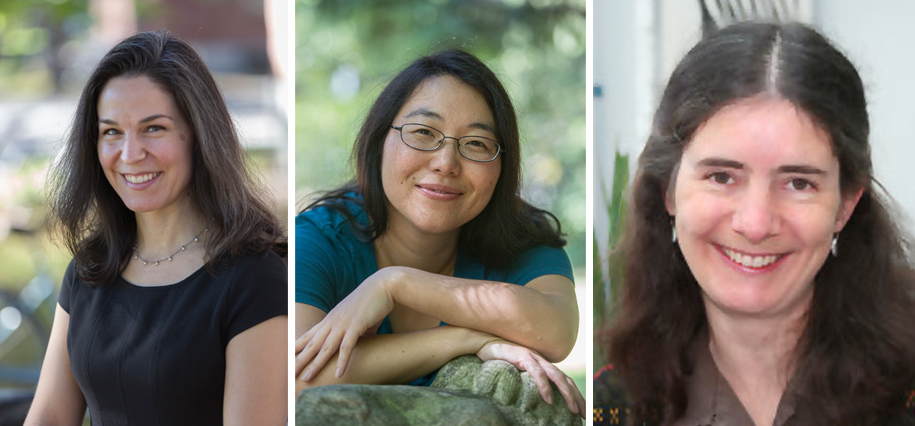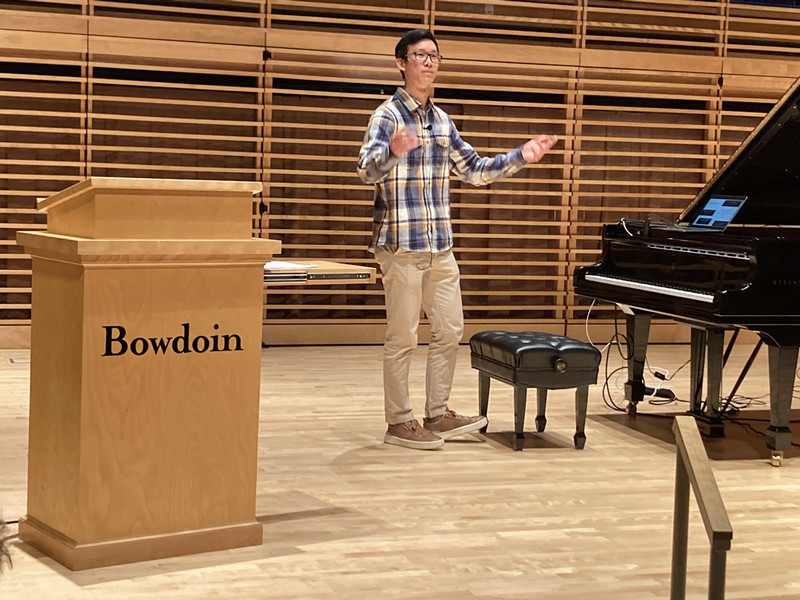Big Bowdoin Math Conference Draws Luminaries, Students
By Eliza Graumlich '17Bowdoin Professor of Mathematics Jennifer Taback says that Bowdoin is known for its strong math department. “If you meet an algebraist of a certain age, there’s a good chance they’ve been to Bowdoin,” she said, referring to well-regarded math summer programs held on campus during the 1960s. Today, math ranks as the third most popular major.
In keeping with that tradition, Bowdoin hosted the American Mathematical Society Fall Eastern Sectional Meeting in late September. Between 300 and 400 mathematicians visited, occupying between twenty and twenty-five classrooms on campus for a two-day conference that included three plenary speakers and eighteen special sessions on specific research topics. In addition, thirty-five undergraduate students presented research, including five Bowdoin students.
Though this is a regular conference, held biannually in each of four regions, Bowdoin’s was unusual in three ways.
First, it included an accessible community lecture in addition to its more specialized presentations. In his talk “Poisoned Wine Bottles, Not Enough Rats,” Michael Kleber, a mathematician at Google who is making the web faster, used a toy problem to demonstrate how effective search algorithms are used in large data sets. He challenged audience members to guess how many rats it would take to find two poisoned bottles of wine in a set of 100. The lecture attracted conference attendees, Bowdoin students, community members and the Brunswick Junior High School eighth grade math team. “I think everybody got something different out of it,” said Taback.
While visiting, Kleber also met with a group of computer science students over lunch. In talking to them, he emphasized the “social” side of programming—that is, the importance of “contributing to the open-source community online and working on projects with engineers that you don’t know,” said Grace Handler ’17, a computer science major who organized the event. She said that she found it valuable to hear this perspective given that “that’s not something we get at Bowdoin, just based on the nature of the curriculum.” Kleber also discussed the pros and cons of going to graduate school versus entering the industry right after graduation, and he gave individual career advice to each student in attendance, according to Handler.
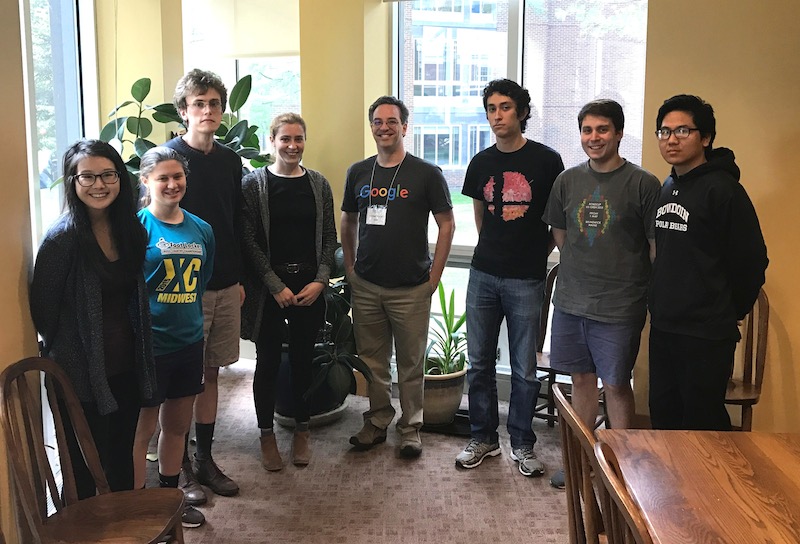
The conference was also unique in that it included a session for undergraduate research. Out of thirty-five undergraduate researchers selected from across the northeast, five were Bowdoin students. Olivia Cannon ’17, Peter Cohen ’17, and Samuel Swain ’18 presented research in pure math while Xuan Yu ’17 and Matthew Leventhal ’17 presented research in applied math.
After a long day of lectures, participants were invited to enjoy a lobster dinner in Throne Hall’s Daggett Lounge—the third unique component of the conference.
Below are brief descriptions of the Bowdoin students’ research presented at the conference:
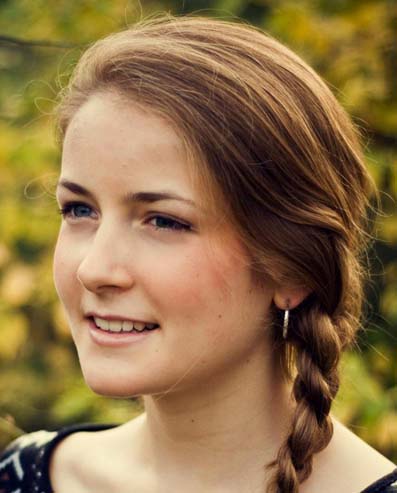
Olivia Cannon ’17, “Faltings Heights of CM Elliptic Curves and Special Gamma Values”
Cannon completed her research with a Research Experience for Undergraduates fellowship at Texas A&M University, where she worked on proving a formula for evaluating products of the eta function in terms of the gamma function. “This formula existed in a more specific case already and some papers had cited a more general formula with some abstract possible proof ideas,” said Cannon. “We went a more classical route. We proved the more general case of the formula as an analogue of the original proof.”
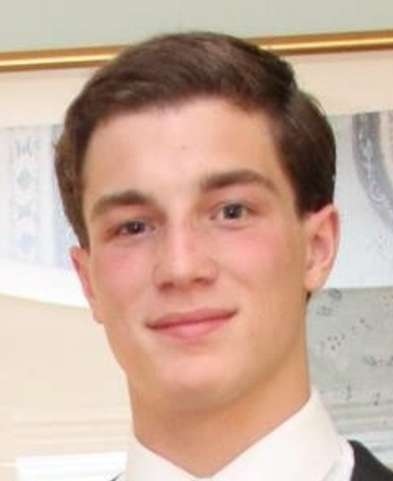
Peter Cohen ’17, “Extending agreement in the Katz-Sarnak Density Conjecture”
Cohen’s research focused on using random matrix theory as a predictive model to understand the behavior of low-lying zeroes of l-functions. He completed his research this summer with Prof. Steven J. Miller at the SMALL Undergraduate Research Project at Williams College, a National Science Foundation-funded REU. The work began with a literature search, in which Cohen read up on number theory and random matrix theory. “You sit down and you Google anything you think might be related at all,” said Cohen. “Once you’ve gotten your feet under you, you look to see where your questions fit into the pre-existing framework.” “Then,” said Cohen, “you build a framework of what you think you want to prove. Once you have that framework, you just sit down and you prove it. That’s the messy, hard, sitting there in front of a blackboard for hours with nothing. We sort of got lucky this summer and we got it.”
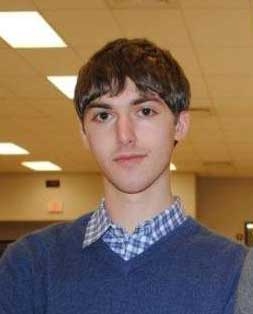
Matthew Leventhal ’17, “Improving the efficiency of statistical analysis of cancer genomes through the development of cloud-based software”
Matthew Leventhal worked at the Broad Institute of Harvard and MIT this summer, comparing the mutations in a normal cell line to those in a tumor cell line and then picking out which of those mutations was implicated in the development of cancers. “My job from there,” Leventhal said, “was to take this huge software pipeline we had developed and move it to a cloud computing platform so that these tools became accessible to people in other labs that have hardware limitations that wouldn’t allow for efficient use of these tools.” The software pipeline could run various statistical tests on “pretty much any cancer system,” said Leventhal.
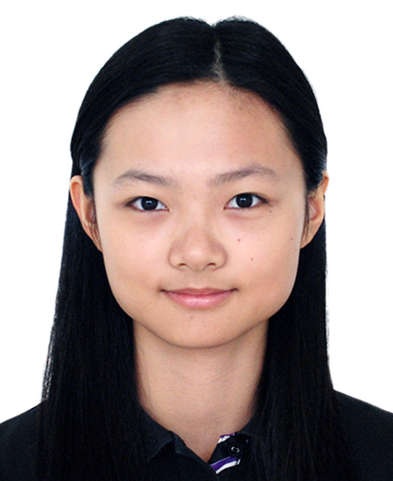
Xuan Qu ’17, “A Preliminary Statistical Study of Rhythmic Behaviors from a Stretch Feedback Pathway in the American Lobster, Homarus americanus”
Xuan Qu’s research began with a neuroscience project she completed during her sophomore year at Bowdoin. In this project, she studied the stretch feedback pathway in lobster hearts. “These pathways regulate and maintain the heart rate,” Qu said. Left with an ample amount of data, Qu turned to mathematics and began statistical analysis to quantify what she had observed, looking for hidden consistencies in the data pool. Through a mathematical analysis that included histograms, a normal distribution curve and plots of linear regression, Xu found consistency in the lobster behavior during stretch across a large variation of baseline data. The results of the project “strongly suggest that stretch is acting on some neuronal processes or mechanisms that control the firing stage of the neuron,” said Qu.
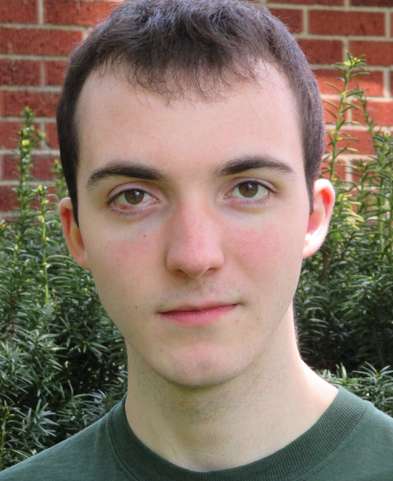
Samuel Swain, a recipient of a Kibbe Science Fellowship, completed his research this summer at Bowdoin under the guidance of Assistant Professor of Mathematics Manuel Reyes. ”I was coloring vectors,” said Swain, “which means that if I take a group of vectors and I’m assigning the color black or white to each vector, I hope to do it in such a way that in particular sets of vectors, I have exactly one white and the rest black.” Each collection of vectors was determined by a particular power of five and Swain said he proved that “for any power of five, it was impossible to color my vectors with just black and white such that I’d have exactly one white,” he said. The research involved linear algebra, abstract algebra, number theory and multivariate calculus.


